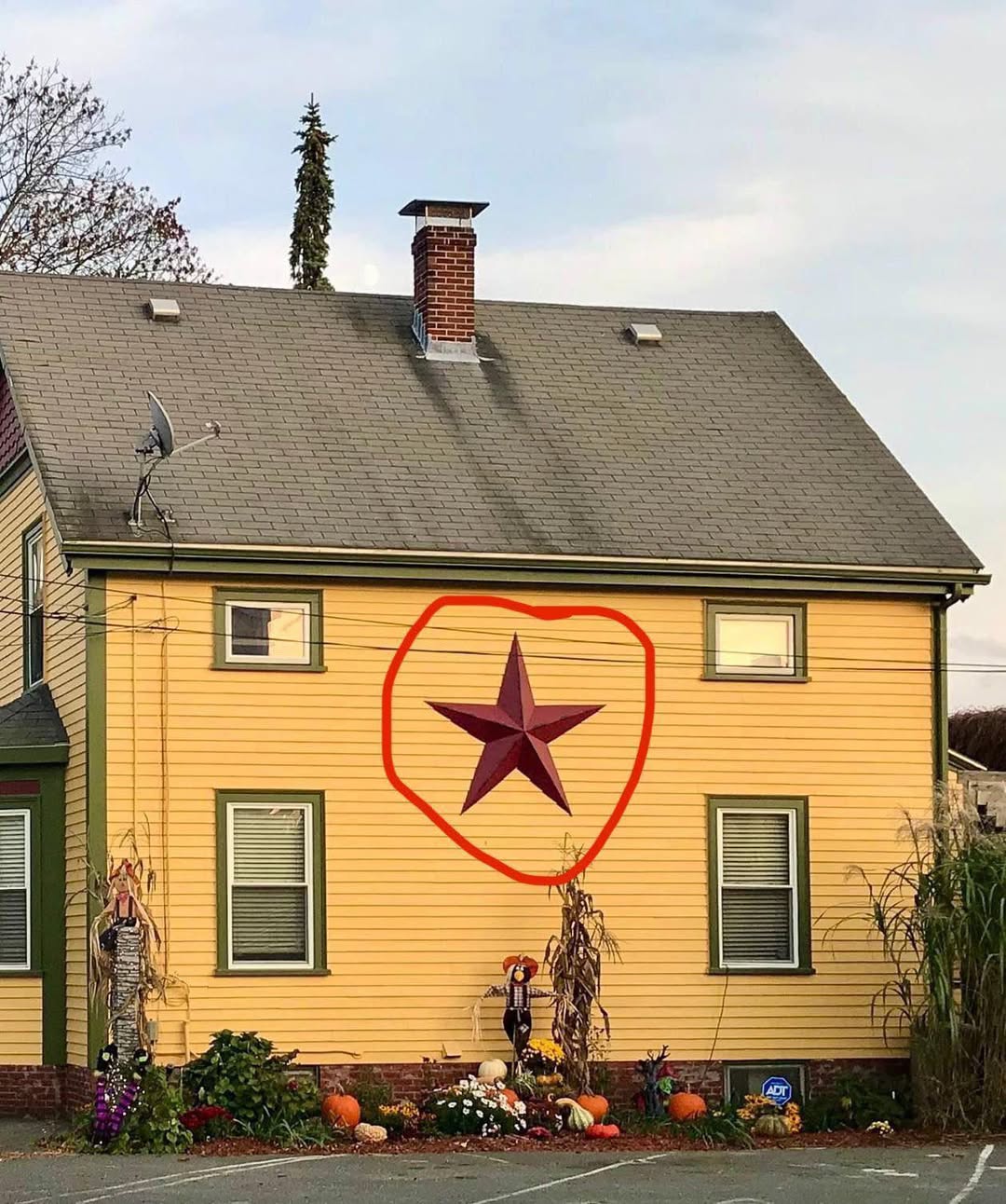If you’ve ever driven through rural America, particularly in Pennsylvania Dutch country, you’ve likely seen large, decorative stars proudly displayed on barns. These stars, commonly known as barn stars, are either painted directly onto the barn or crafted from metal and attached to the structure. In some cases, they are replaced by hex signs or intricate quilt patterns. While they might appear to be simple rustic decorations, barn stars carry a rich cultural and historical significance that goes far beyond their aesthetic appeal.

For German-American farmers, barn stars are far more than just ornaments. Historically, these symbols were believed to protect the farm and its occupants from harm while also promoting prosperity and good fortune. Each color of a barn star carries a specific meaning. For example, a green star represents fertility and abundant crops, while a blue or black star symbolizes protection for the farmer, their family, and their property. Brown stars, on the other hand, represent friendship and strong community ties. These stars are a visual representation of the farmer’s values, hopes, and aspirations.
The tradition of barn stars dates back to the 1830s when German immigrants in Pennsylvania began painting them on barns. These designs originated from German folk art traditions, brought over by settlers who wanted to preserve their heritage in their new homeland. Over time, barn stars became an essential part of the cultural identity of Pennsylvania Dutch communities, blending artistry with symbolic meaning.
Barn Stars vs. Hex Signs
While many people use the terms “barn stars” and “hex signs” interchangeably, they are not the same thing. Patrick Donmoyer, the director of the Pennsylvania German Cultural Heritage Center at Kutztown University, explains that these two symbols have different origins and purposes. Barn stars emerged first as agricultural symbols, often reflecting farmers’ values and hopes, while hex signs came nearly a century later and became more associated with superstition and decorative appeal.
Hex signs owe their popularity to Wallace Nutting, an artist from New England who visited Pennsylvania Dutch country in the 1920s. Nutting misinterpreted the barn stars and quilt patterns he saw, attributing mystical powers to them and referring to them as “hex signs.” This misconception caught on, and by the 1950s, hex signs had become a tourist attraction and commercialized decoration.
Donmoyer emphasizes that barn stars were never originally meant to hold magical properties. Instead, they were practical cultural symbols, deeply connected to agricultural life and a sense of pride in farming traditions.
Symbols of Protection and Heritage
Although modern interpretations often attribute mystical powers to barn stars, their original purpose was more grounded. They were symbols of heritage, community, and dedication to the land. Farmers painted or mounted these stars as a reflection of their values, not necessarily as talismans against evil.
This desire to symbolize protection and prosperity is not unique to Pennsylvania Dutch culture. Similar symbols can be found in traditions all over the world, highlighting humanity’s shared desire for safety, abundance, and connection.
Universal Protective Symbols
In Hinduism and Buddhism, the Om symbol represents balance, peace, and spiritual purification. It is often chanted during meditation, but it also serves as a powerful visual symbol of inner harmony.
Ancient Egypt offers another example with the Eye of Horus, a symbol believed to provide healing, protection, and rejuvenation. Found in ancient art, jewelry, and temple carvings, the Eye of Horus remains one of the most recognizable protective symbols in history.
The Hamsa Hand, widely used in Mediterranean and Middle Eastern cultures, is believed to ward off negative energy and bring blessings, health, and prosperity.
In Native American and African traditions, the turtle is revered as a symbol of longevity, wisdom, and stability. Its slow, steady pace represents resilience and a deep connection to the earth.
Norse mythology offers the Helm of Awe, a symbol believed to protect warriors in battle while instilling fear in their enemies. It represents courage and strength in the face of adversity.
Shared Human Traditions
Despite cultural differences, symbols like barn stars, the Eye of Horus, the Hamsa Hand, and the Om symbol share a common purpose: to protect, inspire, and offer hope. Whether displayed on a barn, worn as jewelry, or carved into a sacred space, these symbols speak to a universal human experience.
Barn stars, in particular, remain an enduring emblem of German-American heritage. They are not just decorations—they are cultural markers, storytelling devices, and symbols of resilience. Each star represents generations of farmers who built their lives around hard work, faith, and community.
As technology continues to bridge cultural divides, it becomes clearer how these symbols, though varied in form and origin, connect us all. They remind us of the shared human desire for safety, prosperity, and a meaningful connection to our roots.
So, the next time you pass by a barn adorned with a star, take a moment to appreciate its deeper significance. It’s not just a piece of decoration—it’s a tribute to cultural pride, a nod to history, and a symbol of the values that built and sustained rural communities for generations.





